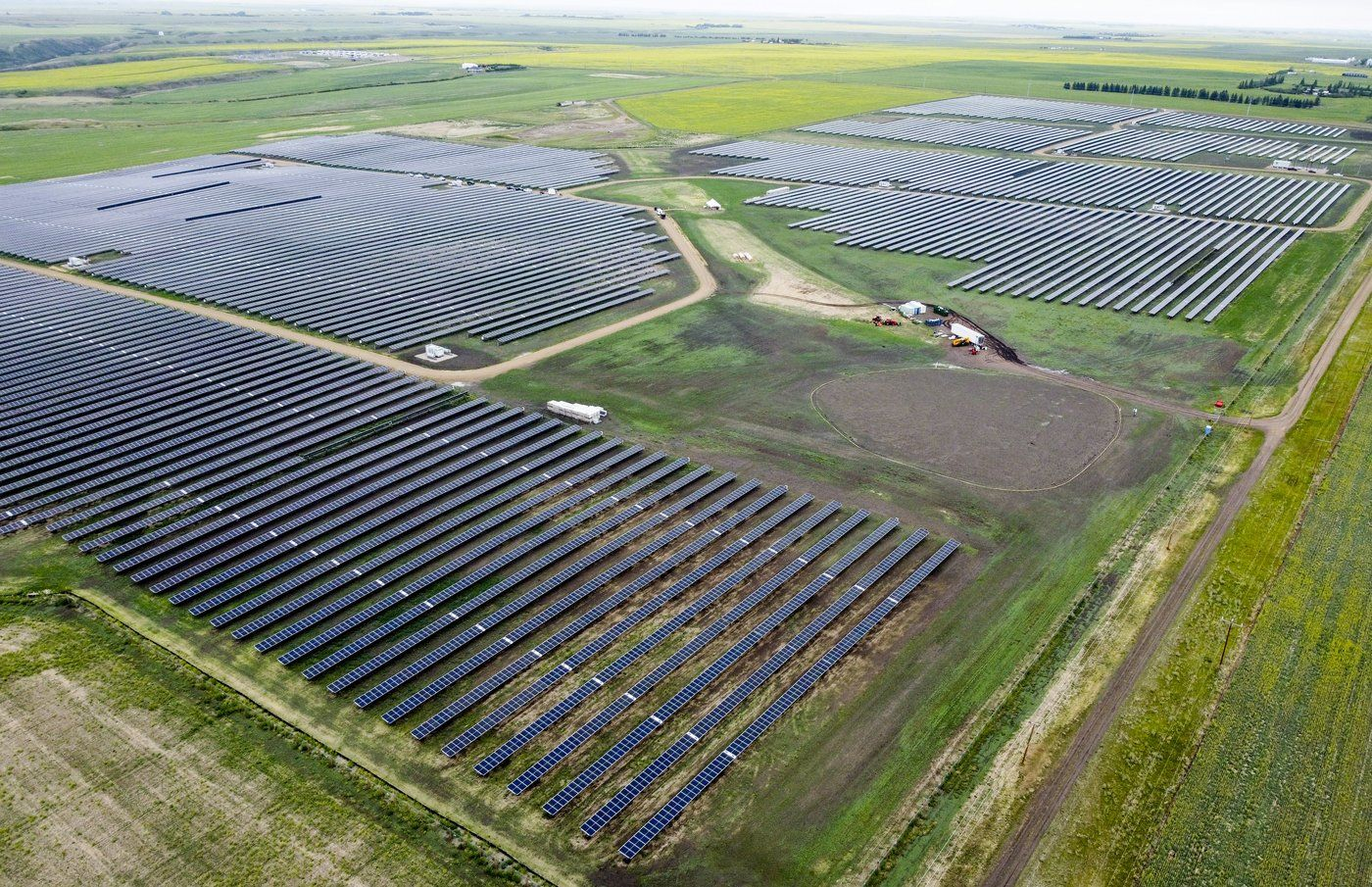Critics are asking why the Alberta government's proposed regulations on renewable power seem to have ignored the conclusions of its own utilities regulator.
"How did they end up creating the renewable regulations they introduced?" asked New Democrat environment critic Sarah Elmeligi. "The regulations do not match the content of the report."
Paul McLauchlin of Rural Municipalities Alberta agreed.
"They swung too far away from the recommendations of the (report). I'm worried about market distortion," McLauchlin said.
On Wednesday, the Alberta Utilities Commission publicly released a report the provincial government had asked it to prepare as part of an inquiry into the impacts of Alberta's booming renewable power industry.
The government has had the report since Jan. 31.
On Feb. 28, the day before it ended a six-month moratorium on new approvals for renewables, it introduced a set of proposed new rules for the industry.
The proposals rule out wind and solar on Alberta's best farmland, impose a 35-kilometre buffer zone around protected areas and so-called "pristine viewscapes," and would require developers to post some kind of financial security for reclamation.
In contrast, the commission's report concludes wind and solar power poses little threat to Alberta's agriculture or environment and that concerns over reclamation and "pristine viewscapes" can be largely addressed with modifications to existing rules.
Renewables are rarely sited on top-quality farmland, it says. Even if they were, says the report, they would use up less than one per cent of that land by 2041.
Reclamation of renewable sites is easier and cheaper than for other industries, the report says. And it concluded there's no consistent way to write regulations protecting a vista that may stir one person but leave another cold.
The Canadian Press on Wednesday was promised an interview with Affordability and Utilities Minister Nathan Neudorf, but it was cancelled by the minister's office Thursday.
In the legislature, Alberta Premier Danielle Smith defended her government's policies.
"If you put acres and acres of solar panels on fields that could be used for irrigation ... you cannot grow agriculture," she said.
"If you put up wind turbines the size of the Calgary Tower or within a couple of kilometres of our beautiful UNESCO Heritage sites ... it really does interfere with our viewscape."
She said the United Kingdom, the U.S. and Australia all have some kind of "parameters" around the siting of renewable projects.
Still, the proposed regulations go beyond what the commission calls for, said Jorden Dye of the Business Renewables Centre, which links renewable power generators with prospective consumers.
"The existing regulatory framework is sufficient," he said. "The government is going against the recommendations of its own commission and singling out the renewables industry."
Elmeligi said the idea of protecting scenic landscapes was considered for the South Saskatchewan Regional Plan but rejected as unworkable.
"It can't be measured, it can't be quantified. How can you hold that as a criteria for development?" Elmeligi said.
"Having a really subjective, wishy-washy criteria like viewscape instantly removes (business) certainty."
McLauchlin said some elements of the commission's report appear to have found their way into government policy. They include an increased voice for municipalities in land use decisions and a recognition that some parts of the province will be more affected by renewable development than others.
He said he would also like to see more transparency in the cleanup provisions of agreements between developers and landowners.
"I don't disagree with the Alberta Utilities Commission, but some level of oversight is needed."
But he fears the government proposals are restrictive and arbitrary.
"Case by case is the best solution," he said.
This report by The Canadian Press was first published March 14, 2024.
The most hypocritical aspect
The most hypocritical aspect of Smith's disagreement with sunshine and Chinook breezes is her selective anti-business biases. Her actions against renewables are so amateurish they are begging for a class action lawsuit.
Random or all-encompassing viewsheds? Seriously? Are they not already punctuated by fossil industry well heads, flares, pipeline junctions and pumphouses and assaulted by the smell of sour gas?
For all the rhetoric in UCP circles about "freedom" and being "open for business" they sure love the shackles they place on new businesses in wind and solar.
Albertans would be justified
Albertans would be justified in looking seriously at rooftop solar panels and home storage batteries, and going offgrid. These products are now top performing energy products and have excellent warranty structures.
Their own government fostered a major campaign to openly suppress clean and affordable renewable power while at the same time allowing their donor gas-fired power companies to jack their rates by orders of magnitude.
Alberta now has the highest electricity rates in the nation. Not long ago private wind power auctions there generated bids of 3.4 cents per kWh. In BC we pay 10 cents per kWh for hydro, and that is considered cheap by North American standards.
Given southern Alberta's very good insolation characteristics, 25 solar PV panels on the roof with a bank of two or three Franklin or Canadian Solar LFP home batteries in the basement or garage, possibly with an EV that can also power a home when needed (it replaces a generator), will effectively free a family from their own government's energy tyranny, and offer a payback period of less than a decade. Coupled with a 25-year warranty on the panels, families and businesses can enjoy years of "free" power if they set rheir minds to it.
Albertans should be encouraged to do the energy math for their own homes and businesses.
In an ideal world where ratepayers have a good relationship with their power utility company, you'd have decent net metering credit rates, say 85%-90%. This allows the utility grid to act as a gigantic "battery" and saves individual ratepayers a bundle on their solar payback. It also offsets the company's need to finance new generation capacity. The 10%-15% net metering credit holdback covers much of the transmission grid costs.
Alberta and other provinces allowing their utilities to stab their captive ratepayers in the back with extremely inflationary rate hikes merely because they form a monopoly need to have a think, and look at California where customers are going offgrid in droves for the same damn reason.





Comments